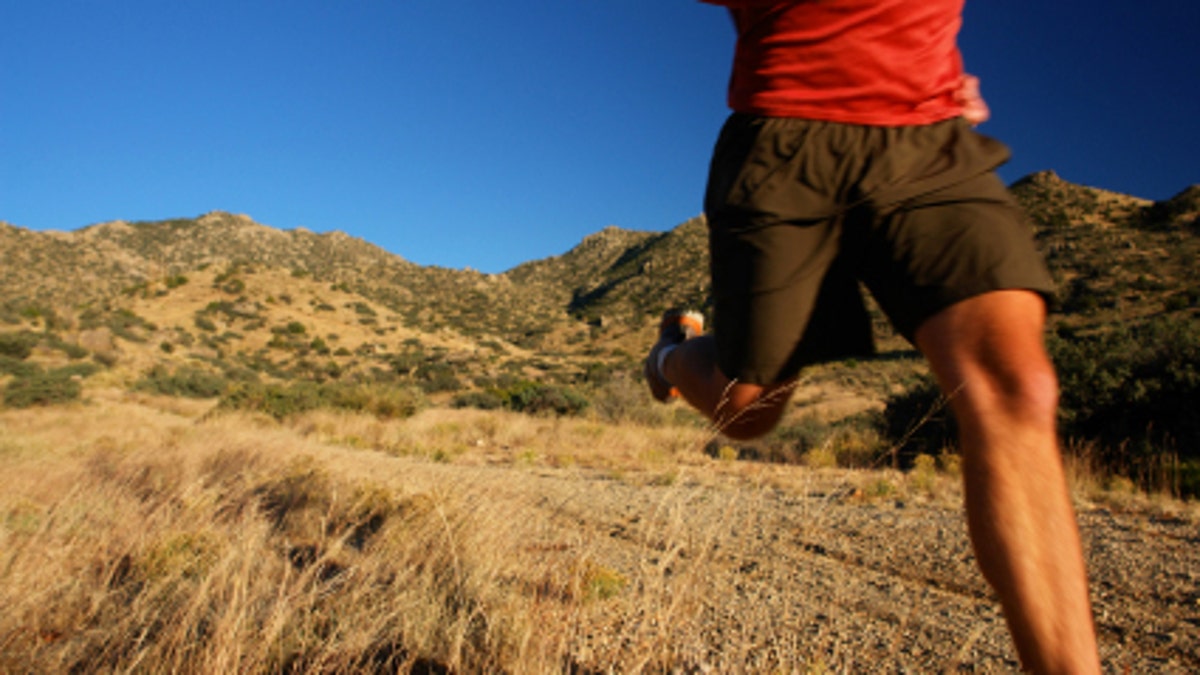
(iStock)
If you’ve ever wondered why your speed on the track comes up short compared to the pros—the latest research suggests that the matter may be out of your hands.
The skeletal structure of the foot and ankle are significantly different between sprinters and non-sprinters, says a recent study published in the Proceedings of the Royal Society B. Researchers analyzed the MRIs of 16 men (8 sprinters, 8 control subjects) and found that—not only were sprinters’ Achilles tendons 12 percent shorter than non-sprinters, the sprinters had longer bones in their forefeet.
What’s interesting about this finding is, we don’t know whether these sprinters were simply born this way or if their bodies adapted this way due to training as they grew up, says Josh Baxter, study author and Ph.D. student at Penn State.
“But we do know that these slight differences place their muscles in a position to better generate force,” says Baxter. “Therefore this plays an important role in how quickly they accelerate.”
But just because you don’t have the same advantages as the pros, doesn’t mean you should throw in the towel on your high-intensity workouts. Check out our tips from David Jack, a Men's Health advisor and director of Teamworks Fitness in Acton, Mass., on how to increase your speed and performance when sprinting.
Fix Your Posture
If you spend a good portion of the day sitting at a desk, your posture is most likely taking a hit for it. Your chest gets tighter, your back weaker, and your shoulders roll forward. The result: Your sprinting becomes less efficient. “So if we concentrate on our posture, it helps us unlock everything and allows our body to move in a full range of monition,” says Jack.
Think of fixing your posture as knocking the rust off, says Jack. “We can try and run as fast as we want,” says Jack. “But if we can’t get our body to get up straight and get our hips and legs to extend—we’re just paddling upstream.”
If you’re not ready to make the switch to a standup desk—which can drastically improve your posture—Jack suggests taking moments throughout the day to stretch. While in a chair, reach your hands above your head and roll your shoulders back. Or try standing up, take in some deep breaths, and hold them for a few seconds—that’ll help loosen up all the muscles attached to your ribcage and hips.
The Running Trend You MUST Try
Utilize Your Arm Strength
“When you’re sprinting, everything works together in perfect unison—so rhythm and coordination are key,” says Jack. “And often times, our movement is initiated with that explosive arm drive.” So to get your arms used to syncing with the rapid turnover of your legs, Jack suggests practicing the “hip-to-lip” movement. Get into a split stance and keep your shoulders relaxed—positioning one hand by your chin and the other down by your hip. Then drive your arms down and back (in a sprinting fashion) as fast as you can for 10 seconds.
Rest for 20 seconds and repeat the exercise a few times to get the feel for correct form. This simple technique teaches you how to move those limbs quickly and helps to develop a skill that translates to the special strength you need for sprinting, says Jack.
Work Your Way Up
If you haven’t been regularly sprinting, you can’t just go out there and start pounding out 100-yard sprints. You need to let your body readapt to those explosive patterns of your muscles collapsing and expanding, says Jack. So to further develop those fast-twitch muscle fibers, Jack suggests starting small and working your way up. Get your body warmed up and start with 10-yard dashes. While staying on the balls of your feet, go all out as hard as you can. Then increase your distance over time.
